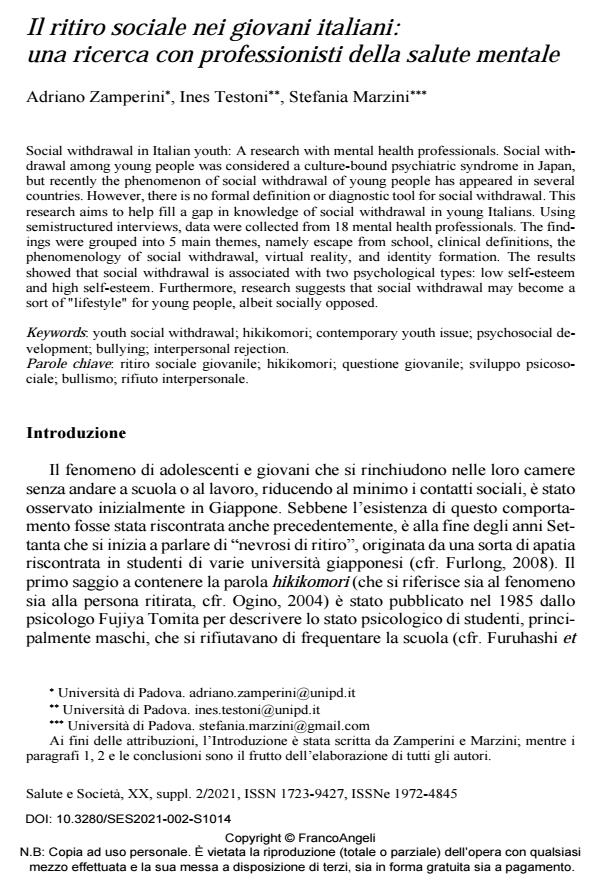Il ritiro sociale nei giovani italiani: una ricerca con professionisti della salute mentale
Titolo Rivista SALUTE E SOCIETÀ
Autori/Curatori Adriano Zamperini, Ines Testoni, Stefania Marzini
Anno di pubblicazione 2021 Fascicolo 2021/suppl. 2
Lingua Italiano Numero pagine 16 P. 219-234 Dimensione file 233 KB
DOI 10.3280/SES2021-002-S1014
Il DOI è il codice a barre della proprietà intellettuale: per saperne di più
clicca qui
Qui sotto puoi vedere in anteprima la prima pagina di questo articolo.
Se questo articolo ti interessa, lo puoi acquistare (e scaricare in formato pdf) seguendo le facili indicazioni per acquistare il download credit. Acquista Download Credits per scaricare questo Articolo in formato PDF

FrancoAngeli è membro della Publishers International Linking Association, Inc (PILA)associazione indipendente e non profit per facilitare (attraverso i servizi tecnologici implementati da CrossRef.org) l’accesso degli studiosi ai contenuti digitali nelle pubblicazioni professionali e scientifiche
Social withdrawal in Italian youth: A research with mental health professionals. Social withdrawal among young people was considered a culture-bound psychiatric syndrome in Japan, but recently the phenomenon of social withdrawal of young people has appeared in several countries. However, there is no formal definition or diagnostic tool for social withdrawal. This research aims to help fill a gap in knowledge of social withdrawal in young Italians. Using semistructured interviews, data were collected from 18 mental health professionals. The findings were grouped into 5 main themes, namely escape from school, clinical definitions, the phenomenology of social withdrawal, virtual reality, and identity formation. The results showed that social withdrawal is associated with two psychological types: low self-esteem and high self-esteem. Furthermore, research suggests that social withdrawal may become a sort of "lifestyle" for young people, albeit socially opposed.
Parole chiave:youth social withdrawal; hikikomori; contemporary youth issue; psychosocial development; bullying; interpersonal rejection.
Adriano Zamperini, Ines Testoni, Stefania Marzini, Il ritiro sociale nei giovani italiani: una ricerca con professionisti della salute mentale in "SALUTE E SOCIETÀ" suppl. 2/2021, pp 219-234, DOI: 10.3280/SES2021-002-S1014